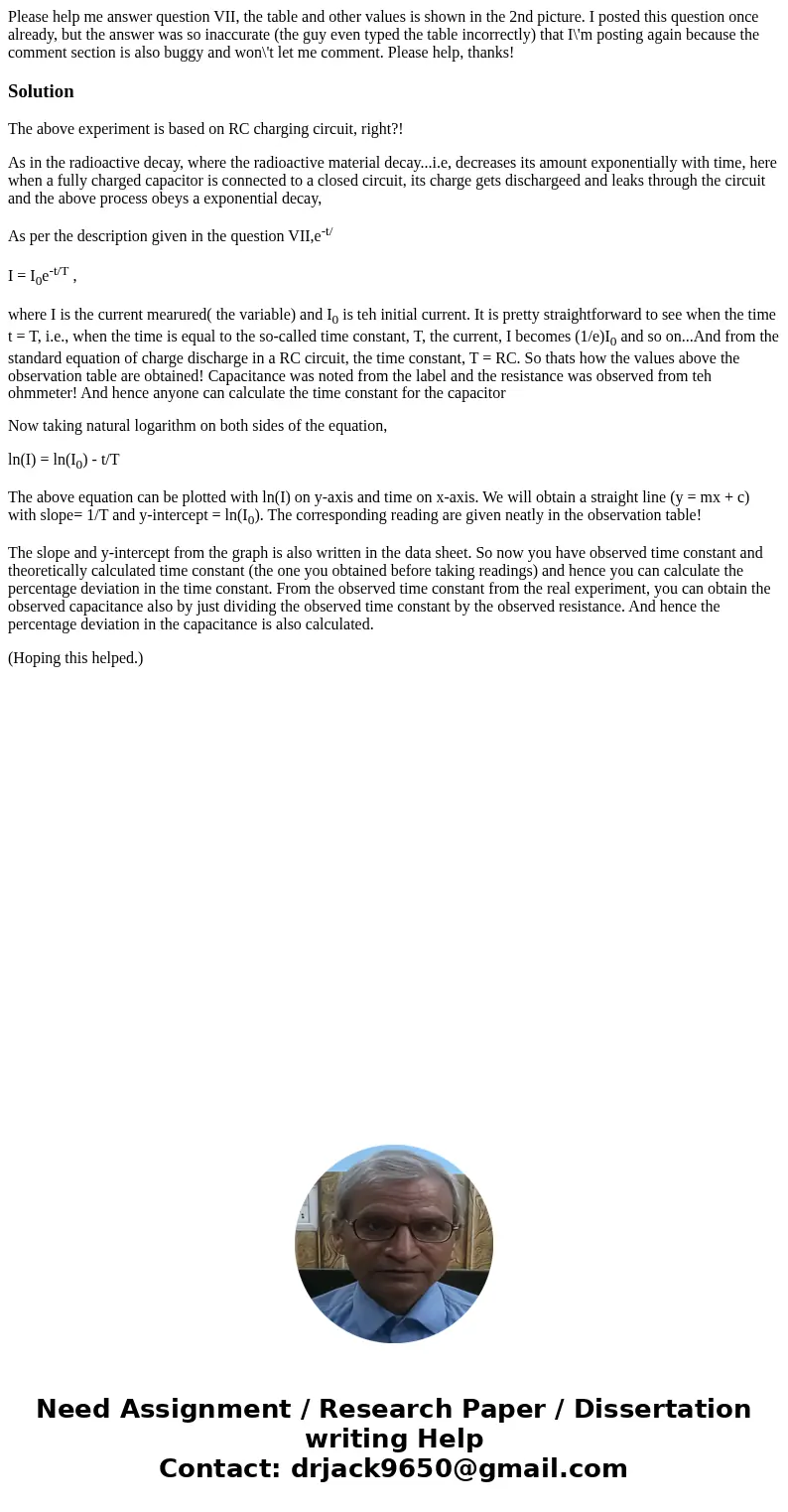Please help me answer question VII the table and other value
Please help me answer question VII, the table and other values is shown in the 2nd picture. I posted this question once already, but the answer was so inaccurate (the guy even typed the table incorrectly) that I\'m posting again because the comment section is also buggy and won\'t let me comment. Please help, thanks!
Solution
The above experiment is based on RC charging circuit, right?!
As in the radioactive decay, where the radioactive material decay...i.e, decreases its amount exponentially with time, here when a fully charged capacitor is connected to a closed circuit, its charge gets dischargeed and leaks through the circuit and the above process obeys a exponential decay,
As per the description given in the question VII,e-t/
I = I0e-t/T ,
where I is the current mearured( the variable) and I0 is teh initial current. It is pretty straightforward to see when the time t = T, i.e., when the time is equal to the so-called time constant, T, the current, I becomes (1/e)I0 and so on...And from the standard equation of charge discharge in a RC circuit, the time constant, T = RC. So thats how the values above the observation table are obtained! Capacitance was noted from the label and the resistance was observed from teh ohmmeter! And hence anyone can calculate the time constant for the capacitor
Now taking natural logarithm on both sides of the equation,
ln(I) = ln(I0) - t/T
The above equation can be plotted with ln(I) on y-axis and time on x-axis. We will obtain a straight line (y = mx + c) with slope= 1/T and y-intercept = ln(I0). The corresponding reading are given neatly in the observation table!
The slope and y-intercept from the graph is also written in the data sheet. So now you have observed time constant and theoretically calculated time constant (the one you obtained before taking readings) and hence you can calculate the percentage deviation in the time constant. From the observed time constant from the real experiment, you can obtain the observed capacitance also by just dividing the observed time constant by the observed resistance. And hence the percentage deviation in the capacitance is also calculated.
(Hoping this helped.)

 Homework Sourse
Homework Sourse